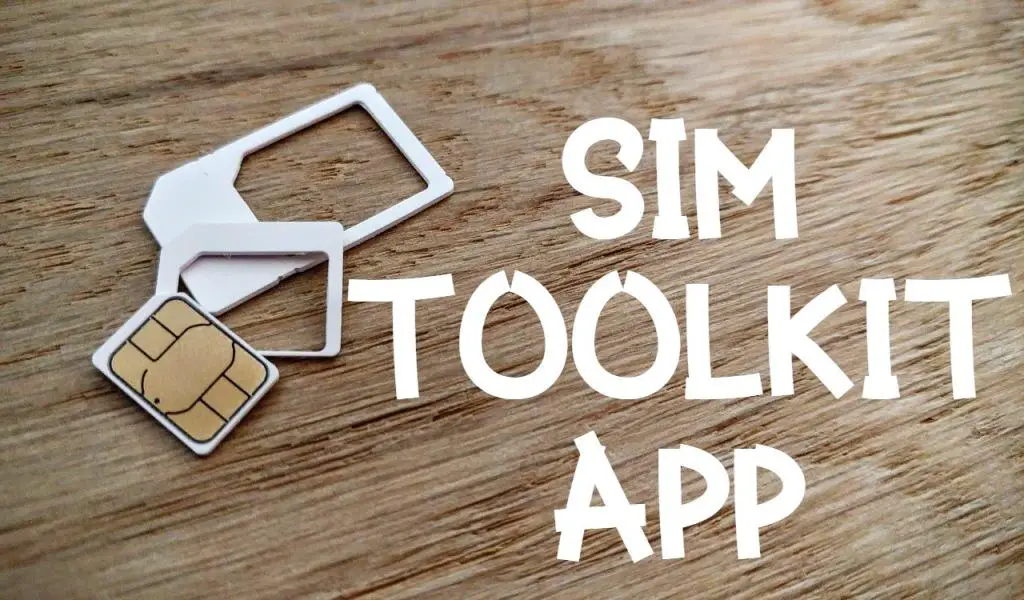Have you ever tried to find the file location of a particular image in your Files and discovered it to read something like this: “/storage/emulated/0/DCIM/Camera/IMG 202020430 197267.jpg“? Now that you have a complete understanding of the file path, including the DCIM, Camera, and image name, what does the ‘/storage/emulated/0‘ stand for? You must find it puzzling because there is not an “emulated” folder in the file directory when you try to search for it in File Explorer. Since there is no specific folder in the file directory under “emulated,” you may be asking what precisely “/storage/emulated/0” is. And how to reach it. In this article, we will go into great detail about this.
Put bluntly, the root directory from which you retrieve your files in the file explorer on your Android device is also called the Android storage/emulated/0 folder. However, contrary to what its name would imply, this folder is only a connection to the internal memory. It is not real memory. This is also carried out for security purposes. If you have ever used a file manager like ES File Explorer. You have probably noticed that it unusually prints out the folder you are inside. For example, it is understandable that you would encounter a file path like storage/emulated/0 without understanding what it refers to. Especially considering that you cannot access these internal storage directories until your smartphone is also hacked.
You can get all the information you need in this post to find the answers to all the queries you possibly have. Let us get right to the specifics.
What is the purpose of the storage/emulated/0 Folder?
Your Android device has internal storage, just like a computer does. An SD card or USB drive can be also used to attach external storage to numerous smartphones. You may view your personal files and folders along with the delicate OS files on this smartphone’s internal storage to use the windows explorer program. Which is already preinstalled on your smartphone.
keeping you out of the computer system on your storage capacity. To thwart kinds of errors and accessibility to the true filesystem on your smartphone. Android provides you with access to your documents without really reaching the actual physiological place on the smartphone. Because of this setup with emulated memory. The root of the storage you may see on your smartphone is storage/emulated/0. For example, what appears to you to be a DCIM/camera is really a storage/emulated/0/DCIM/camera.
Android developers employ something called an emulated folder, or emulated storage. In addition to keeping you out of the computer system on your storage capacity. To thwart kinds of errors and accessibility to the true filesystem on your smartphone. Android provides you with access to your documents without really reaching the actual physiological place on the smartphone. Because of this setup with emulated memory. The root of the storage you may see on your smartphone is storage/emulated/0. For example, what appears to you to be a DCIM/camera is really a storage/emulated/0/DCIM/camera.

The correct path to the documents is /storage/emulated/0/Download.
- A shortcut to the righteous path of /storage/emulated/0/Download is located at /sdcard/Download.
- The genuine contents, meanwhile, reside in the /data/media filesystem. Which again is linked to /storage/emulated/0 (and often other mount points as well).
- The Symlink Any file that includes a connection to that other directory or files in the form of such a relative. An absolute address that impacts pathname translation is referred to in technology as a held in high. By 1978, Data General’s RDOS and DEC’s personal computer system software both included external links.
In summary, using FUSE or sdcardfs emulation, /sdcard and /storage/emulated/0, respectively simulate a FAT/vFAT/FAT32 filename. Refer into /data/media/0 (or /mnt/expand/[UUID]/media/0 in case of Adoptable Storage). Symlink and bind mount (see “Creating a bind mount”). These are outside the purview of this topic. Because they are not specifically connected to Android but rather to Linux in principle.
Why would emulation or “/storage/emulated/0/” even appear?
Emulation is present on every file in the File Folder, whether you are able to access it or not depends on the Android device you are operating. The symlink, which is visible on some devices but not others, is the only difference.
Hence why is emulation a thing?
By adding an abstraction layer or emulation to the original storage device, third-party programs and systems are prevented from accessing private customer media and other stored data on actual flash memory like SD cards. This corresponds to the fact that dependent on the restrictions. Simulation limits access to your actual file system to mere traversal and prevent third-party procedures and projects from reading or writing data.
Emulation, also known as “/storage/emulated/0,” is one method Android uses to enhance the safety and confidentiality of customer data.
Emulated Storage: What Else Is it?
Consider emulated storage as a means to provide a connection to a document in your internal memory while really facilitating immediate access. The term “symlink,” which translates as “symbolic link,” is used to accomplish this. When accessible, a device’s external storage and internal storage are both referenced by a symbolic link. Thus, emulating storage completely emulating. This indicates that by directing to the actual file path, it simulates what is actually on the internal and external storage. The actual location on the real filesystem is presumably data/media/0/DCIM/Camera. Even though you might perceive a file as being in storage/emulated/0/DCIM/Camera. To prevent applications from directly connecting, this is locked off of the consumer aspect of things. This probably begins from storage/emulated/0 on Mobile phones. But there will also be storage/emulated/1 with external storage.
How many Benefits Does Emulated Storage Offer?
Whether something employs internal or external storage, an emulated subfolder has a significant advantage. The Android operating system is capable of prohibiting applications on your device from having unauthorized access to personal information. Or important files in the Android operating system by only going directly to the storage/emulated/0 folder through a hyperlink. And not the real internal storage. Keep in mind that this holds true for both internal memory and external storage options like SD cards. The storage/simulated/1 folder will provide access to the emulated SD card. Because Android supports both simulated and portable storage, your data should be secure regardless.
How Does the accessing of storage/emulated Folders with File Explorer take place?
You will need to use a program other than the default file explorer. If you wish to see this portion of the file path for your files and folders. ES File Explorer is one of the best programs for finding the location of the storage/emulated/0 folder on your smartphone. But bear in mind that you would not be able to edit these files if you download this program. These steps should be followed in order to display the internal storage emulated folder in ES File Explorer:
- ES File Manager can be downloaded and installed from the Google Play Store.
- Launch the program.
- Visiting the home page
- Choose “Internal Storage.”
- You recognize that the directory you are currently on is the storage/emulated/0 folder at the top of the screen.
- You will see an “Empty Folder” error when you select “emulated,” though. This is due to the fact that unless your smartphone is unlocked. You are unable to view the secret files below.
When you have enabled Troubleshooter on your device. You may also use Android Debug Bridge (ADB) to examine the storage/emulated/0 folder. To activate Device manager:
- Launch the Settings screen.
- If applicable, scroll to Software Information after selecting Discover Phone.
- Seven times, press “Build Number.”
- Reopen the Developer Options entry in the Basic Settings menu.
- Look for “USB Debugging” and enable it.
Now, unpack ADB into a folder on your computer after downloading it from this website.
- Enter the “platform-tools” folder in the location you extracted ADB to.
- Right-click while holding down Shift.
- “Open Powershell window here” should be chosen.
- When you enter “ADB devices,” click Refresh.
- Connect your mobile device again, and then approve the screen prompt.
- Once more, enter “ADB devices.” If the serial number for your gadget is visible, this step was effective.
- Key in “ADB shell.”
- Simply enter “cd storage/emulated/0.”
- You can enter “ls” to examine the contents of this folder once you found it.
May Emulated Folder Also be Deleted?
Meanwhile, The emulation tier only duplicates the data that is on your storage, whether that is the internal storage on your phone or transportable storage like an SD card. Android removes the actual data stored on the internal storage or SD card when you erase a file, folder, or another item in the emulation tier. Unfortunately, because the Android filesystem protects it, you cannot remove the full emulation folder. You will effectively be resetting your complete device’s capacity if you remove storage/emulated.
third-party software message “/storage/emulated/0/XYZ is unavailable or hard to read?“
Assume you have an application that searches a given file or folder for items belonging to a certain category, like films or music. It might check the /storage/emulated/0/XYZ directory for the same information. For instance, if Poweramp is configured to check for songs in the /storage/emulated/0/Downloads folder and there is no music in that location, /storage/emulated/0/Downloads will be also displayed as absent or inaccessible. There are two scenarios where your program might search this sub-directory for audio. Either the directory is configured in your preferences as the default music library, or Poweramp previously found songs in the directory. But has since been also deleted. Install actual songs in the /storage/emulated/0/Downloads folder so that Poweramp can seek for this place; alternatively. Go to Settings>Poweramp>Library>Downloads and uncheck the box next to Downloads as a path where its program can look for songs.
What does storage/storage/emulated/1/ actually mean?
Moreover, Emulation can occur including both internal and external memory; as a result, Android might utilize 0 and 1 to display the file directory of the item, depending on whether the item is already located in the internal storage or the secondary device, including an SD card, in order to distinguish between the two.
For instance, DCIM is a folder that can be found on both external storage and the device’s memory. If DCIM within both the internal and external store have emulation. It shall now display /storage/emulated/0/DCIM for all the things contained in the internal storage’s DCIM directory and /storage/emulated/1/DCIM for all the items stored in the external storage’s DCIM folder. 1 is merely a connection to the Android smartphone’s remote storage device.
The Last Word- conclusion
Lastly, Your smartphone’s Android storage/emulated/0 subdirectory is a metaphorical bridge, or symlink, to a real source file on the storage of your device. This gives you the clearest understanding of how emulated storage functions because of the files. And directories you see in your Project directory are not directly observable there. Unwanted programs cannot reach the real filesystem that Android maintains in its kernel thanks to emulated storage. These applications can only use the emulation layer directly. As expected, until your Android smartphone is unlocked. You cannot browse these directories. Presumably, you now understand how your Android phone’s storage/emulated/0 directory operates.
FAQs
It serves as a name tag for the location on your device where the actual data is kept. For instance, the phrase “storage emulated/ DCIM/ thumb” would inform you to look in your file manager software for DCIM (camera storage) to retrieve your information.
From the Play Store, install ES FILE EXPLORER. The sole exception to this is this File Explorer. On the section in the top left, look for “Favorites.” Select “ADD” to add your own favorite folder. Give it any name you choose, enter “/storage/emulated/999/” in the path section, and then touch OK. This is for you.
As of Android 1.0, SD cards have been a transportable type of storage. USB compatibility was already included in Android 6.0. Since Android 3.0, emulation layers were also employed to expose a piece of internal storage as simulated memory.
Hi, I’m Bhoomika Saini. Currently, I’m pursuing B.tech in computer science engineering. My hobbies consist of writing codes, reading and writing about stuff that fascinates me, exploring movies and songs, and traveling around. I’m a person who likes to improve myself and outcast myself in whatever I do. This growth becomes my strength pillar for my future endeavors.

